Reviews
Terry Gilliam
USA, 1995
Credits
Review by Evan Kindley
Posted on 17 August 2010
Source Universal DVD
Categories Favorites: Time Travel
Released in 1995, six years after the fall of the Berlin Wall and another six before the fall of the Twin Towers, Twelve Monkeys was a film in tune with its own uncertain era. It was a time when there was something of a crisis vacuum in American culture - what exactly are we supposed to be afraid of? - a vacuum that a number of more or less vague potential calamities rushed in to fill: Norwegian rockets? Sarin gas? American militias? Ethnic cleansing? Freak waves? Murderous running backs? It was a time when all manner of strange things were possible. Even - why not? - a big-budget science fiction movie starring Bruce Willis adapted from a 1962 Chris Marker “ciné-roman” made up almost entirely of still photographs.
Twelve Monkeys, written by Blade Runner and Unforgiven screenwriter David Peoples in collaboration with his wife Janet and directed by Terry Gilliam, updates and expands Marker’s iconic La jetée with taste, intelligence, and, most surprisingly of all, a sense of the broader political relevance that gave the original its power. Where Marker’s film reacted most immediately to the aftermath of the Franco-Algerian War and worldwide fears over nuclear annihilation sparked by the Cuban Missile Crisis, the Peoples’ script glances obliquely at contemporary phenomena like the Ebola scare of the late 1980s, rumors about the origin of AIDS in the mating habits of rhesus monkeys, the emerging threat of international terrorism, the economic decline of many American cities, and the general condition of “pre-millennium tension” (if I may borrow a phrase from Tricky, another representative voice of the era).1 What’s curious from our perspective is that, while the world situation at the time of La jetée’s creation arguably appeared much more apocalyptic than it did in the relatively stable mid-90s, Twelve Monkeys is by far the more anxious and despairing creation. If Marker’s film feels like the vision of someone who’s just narrowly missed the end of the world, Gilliam’s is more reflective of someone who’s pretty sure it’s around the corner.2
In such dark days, there’s not much call for subtlety, and subtle Twelve Monkeys is not. Though nowhere near as hyperactive as subsequent Gilliam films like Fear and Loathing in Las Vegas and The Brothers Grimm, Monkeys does feature at least three quarters of a kitchen sink thrown at the classy chassis of Marker’s story, in which a man obsessed by a traumatic childhood memory (here named Cole and played by Willis) is sent back in time by a team of scientists to help revive a dying world. (In Monkeys, the goal is to understand what caused the crisis; in La jetée, it’s merely to collect resources that could lead to the earth’s regeneration.) Gilliam can afford some excess, though, because the fundamentals he’s working with are so solid. The Peoples’ long but tightly structured screenplay owes at least as much to James Cameron’s Terminator as it does to La jetée, and the additions they make to Marker’s basic scenario are unexpected but appropriate. For instance, right off the bat we are told that “5 billion people will die from a deadly virus in 1997 … the survivors will abandon the surface of the planet … once again the animals will rule the world….” The killer virus and the animal survivors are both added details (though the latter is perhaps suggested by La jetée’s “museum of ageless animals” sequence) that shift Twelve Monkeys into a much more atavistic universe than Marker’s more rarefied high-modernist dystopia. Here the enemies that wipe out humankind are not some diabolic new technologies but those old standbys, incurable diseases and wild beasts. The first threat Cole faces, on being sent topside to investigate the condition of the earth, is an angry bear.
Gilliam, as might have been expected, runs with the most archaic and savage elements of the Peoples’ screenplay, and actually comes up with a surprisingly gritty, scrappy film, a good deal less overblown than anything he had made since Time Bandits (though by no means less overwrought). Having already definitively “done” time travel, the dystopian future, and mental illness with Time Bandits, Brazil, and The Fisher King, respectively, the scenario of Twelve Monkeys was almost too perfect for Gilliam, who risked repeating himself or hitting the target too squarely on the nose. But he smartly saves his trademark steampunk-baroque art direction for a few key locations, like the interrogation room where Cole is questioned about his fact-finding missions to the past (which recreated the architect Lebbeus Woods’ drawing “Neomechanical Tower (Upper) Chamber” so closely that Woods sued the production) or the time travel chamber itself. Where Marker supplies only a few stills of his protagonist lying on a table to suggest the scientific procedures that make time travel possible, Gilliam delights in zany details: in his version, Cole must (a) don a form-fitting body condom before (b) encasing himself in an additional plastic bubble suit that makes him look a little like a see-through Michelin Man, after which he can finally (c) be transported via hydraulic lift into a glowing industrial orifice. All of this paraphernalia has a pleasingly old-fashioned funkiness to it; things squish and clank and sputter rather than gliding smoothly around on an Industrial Light & Magic server somewhere. Just as Gilliam gave us the dirtiest possible versions of the past in early films like Jabberwocky, Time Bandits, and Monty Python and the Holy Grail, Twelve Monkeys imagines a very grimy, fetid future, in which technology has made no direct advances and can only reconfigure and reconstitute the inventions of the past.
Once we get above ground and into the past (or “present”—i.e., the 1990s), though, Gilliam makes do with “realism,” although of a highly agitated and unruly sort. The cinematographer Roger Pratt (who also shot Brazil and The Fisher King for Gilliam) nicely implies Cole’s bottom-dweller disorientation by keeping the camera at low, skewed angles and flooding every scene with lots and lots of light. This, combined with Gilliam’s trademark wide angle lenses, makes rooms look huge and actors squinty and uncomfortable, which is exactly how Cole would perceive the world after his long incarceration underground (where, we learn, he’s lived since he was eight). Adding to the ambient nightmarishness is an out-there score by Paul Buckmaster (incorporating themes from Astor Piazzolla’s Suite Punta del Este) that mixes the queasy wheezing of a bandoneon, loud percussive piano thuds, and pockets of orchestral dissonance to produce a very unsettling atmosphere indeed.
Like La jetée, though obviously on a larger scale, Twelve Monkeys divides quite neatly into chapters, following Cole as he is sent to Baltimore circa 1990, World War I-era France, and then to Baltimore circa 1996 in quest of more information about a terrorist organization called the Army of the Twelve Monkeys and their possible involvement with the virus that has wiped out human civilization. The first section takes place for the most part in a mental institution (more Snake Pit than Cuckoo’s Nest) where Cole encounters Jeffrey Goines, a schizophrenic rich kid and animal rights activist played by an eager-to-please Brad Pitt. Gilliam is of course a connoisseur of over-the-top mad scenes (cf. The Fisher King, passim), and under his liberal hand Pitt, duly deglammed by a lazy eye and a dirty velour pullover, takes his maiden voyage to the Land of Over the Top. (He’s since gotten much better at spazzing out; witness the more controlled chaos of his performances in Inglourious Basterds and the Coen Brothers’ Burn After Reading.)3 Goines’ paranoid rantings about consumerism and the history of public health - “There was no such thing as germs before the 18th century!” - don’t speak too well for the coherence of his Weltanschauung, but the Army of the Twelve Monkeys does turn out to be a force to be reckoned with, though not quite in the way Cole’s superiors think.
In the same fateful nut-house, Cole meets a beautiful and open-minded psychotherapist named Kathryn Railly (played by the once-ubiquitous, now sorely missed Madeleine Stowe), whom he will later abduct and enlist in his quest to solve the mystery of the Twelve Monkeys. (Willis and Stowe’s scenes together are nice enough, though they lack the intimate quality Willis was able to muster for Quentin Tarantino the year before in Pulp Fiction; his best moments are probably his tearful reactions to popular music on the radio - Fats Domino’s “Blueberry Hill,” Louis Armstrong’s “What A Wonderful World,” the Chantays’ “Pipeline” - when Cole’s stunted, childish vulnerability momentarily comes through.) Together Cole and Railly drive from a fast-decaying Baltimore to a faster-decaying Philadelphia - inspired music cue: Tom Waits’ “Earth Died Screaming” - filled with ranting street-corner preachers, ominous graffiti, and other signs of the imminent apocalypse. It turns out that Goines’ militant leanings are at least in part an expression of an Oedipal feud with his virologist father - Christopher Plummer trying out a ridiculous Foghorn Leghorn drawl - and that he and his laboratory should be the real focus of the scientists’ attention. (Pace Marker, there’s not much sympathy for radical leftist movements here; Cole summarizes the movie’s opinion of the Army’s utopian schemes pretty tidily when he dubs them “just a bunch of dumb kids playing revolutionaries.”)
It’s in its final moments that Twelve Monkeys moves closest to La jetée in tone and theme. Both films share a preoccupation with fate and with time travel as a metaphor for both human memory and human helplessness in the face of global catastrophe. Cole, like Marker’s nameless protagonist, realizes that he is ultimately only a tourist in the past, that you can visit another time and have a look around, but you “can’t change anything,” as he puts it, “because it’s already happened.” (It’s true that the film’s final twist equivocates on this point a little, but as far as Cole’s case is concerned, it might as well be the truth.) An even more direct quote of the sequoia tree ring scene from Hitchcock’s Vertigo (“Here I was born, and here I died”) than in Marker’s film sets up Kathryn’s transformation of herself into a Hitchcock blonde and the final recurrence of Cole’s childhood memory at the Philadelphia airport. The Peoples are sensible enough to retain the ouroborosesque beauty of La jetée’s ending intact, and it elevates the ilm to a kind of grandeur it had previously only gestured at. Gilliam’s handling of these final, crucial sequences is surprisingly elegant and restrained, again using an abundance of light to extraordinary effect, as if to suggest that there’s nowhere to hide from fate, or from history. It may not quite attain the heights of a La jetée or a Brazil, but in our post-apocalyptic action-flick epoch - where computer-generated beasts roam virtually plotless landscapes, Gilliam is directing Arcade Fire webcasts, Willis is a seat-filler at Sylvester Stallone’s celebrity stag party, and everybody feels at least fairly confident about what to be afraid of - Twelve Monkeys looks momentous indeed.
- It also anticipated the outbreak of outbreak movies around the turn of the 21st century, including 28 Days Later, I Am Legend, The Happening, Children of Men, and, um, Outbreak (actually released the same year).
- Though the Peoples’ script was obviously crafted with a great deal of attention to La jetée, Gilliam reportedly didn’t even see Marker’s film until after completing production on Twelve Monkeys. As a result of this handy end-run around the anxiety of influence, there are few obvious visual or stylistic echoes.↩
- Gilliam’s original picks for Cole and Goines were Nick Nolte and Jeff Bridges, but these two actors - both, incidentally, dead ringers for the director himself - were unfortunately vetoed by the studio.↩
More Favorites: Time Travel
-

Bill and Ted’s Excellent Adventure
1989 -
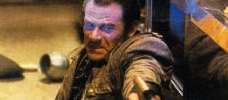
Trancers
1985 -
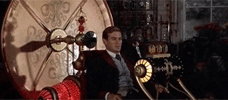
The Time Machine
1960 -

Groundhog Day
1993 -

Warlock
1989 -

The Navigator
1988 -
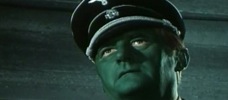
Tomorrow I’ll Wake Up and Scald Myself with Tea
1977 -
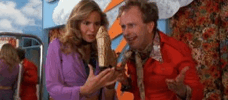
The Spirit of ‘76
1990 -
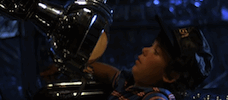
Flight of the Navigator
1986 -
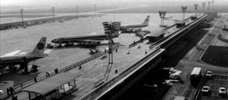
La jetée
1962 -
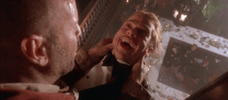
Twelve Monkeys
1995 -

Beastmaster 2: Through the Portal of Time
1991 -
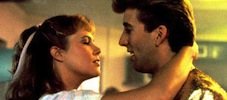
Peggy Sue Got Married
1986 -
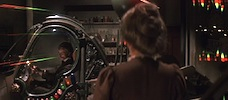
Time After Time
1979 -

Somewhere in Time
1980 -
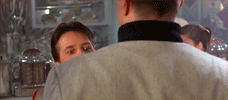
Back to the Future
1985 -
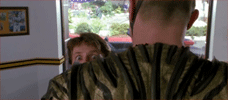
Back to the Future Part II
1989 -
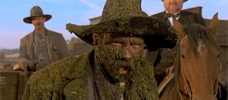
Back to the Future Part III
1990 -
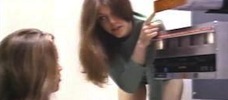
Idaho Transfer
1973 -
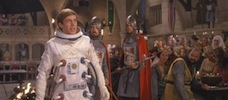
Unidentified Flying Oddball
1979 -
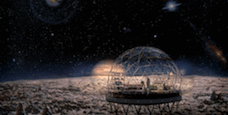
Slaughterhouse-Five
1972 -

The Lake House
2006 -
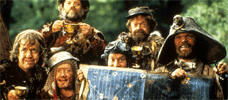
Time Bandits
1981 -
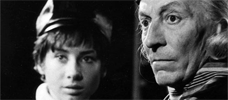
Doctor Who
1963–present -
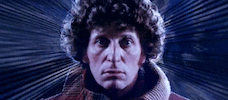
Doctor Who
1963–present
We don’t do comments anymore, but you may contact us here or find us on Twitter or Facebook.



